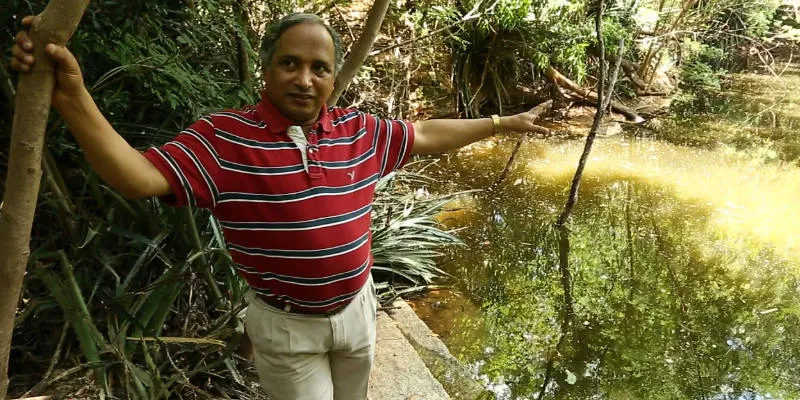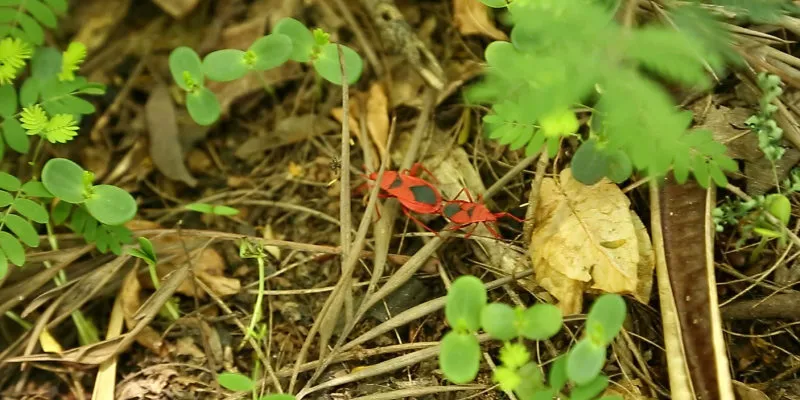By 2020, Bengaluru will be unlivable; IISC professor shows how it can still be saved
He is not an alarmist. But Professor TV Ramachandra’s recent report that Bengaluru will be an unlivable city in five years has surely raised an alarm.

Dr Ramachandra, from Energy and Wetlands Research Group in Indian Institute of Science (IISC), says that because of the rapid and “senseless” urbanisation, the city has lost 88 percent of vegetation and 79 percent of water bodies, both of which act as a heat sink and moderate temperature. “By 2020, 94 percent of our landscape will be under concrete. That is an unrealistic and tragic growth. Our children will not have clean air, clean water, and clean environment, all of which go against Article 21 of the Constitution,” he declares.
And because Dr Ramachandra is a scientist, he also has some solutions on how to reverse the damage. A study conducted by his department found a direct correlation between the presence of diverse vegetation (wetlands) and its effect on the ground water table. “We monitored the water table in the immediate vicinity of the campus. Earlier, in the open wells, the water table was 150 feet, which has now risen to 10 to 15 feet. The diverse vegetation in the campus has helped not only in retaining water in the wells but has also recharged the ground water,” he says.
A forest in the heart of the city
If you have ever been to IISC, there is no way you will return unmoved. The main Gulmohar tree-lined avenue indeed seems like a red carpet spread out to welcome guests. It was a hot afternoon when we visited recently to meet Dr Ramachandra, and we could immediately feel that the air had cooled down. It must have been 30 odd degrees Centigrade outside, but inside the campus we felt it was the perfect day for an outdoor picnic.

And our wish was granted. Dr Ramachandra took us to the Centenary Pond near the old Ecological Science Department building in the campus, which was opened in 2008. The pond, which was initially a quarry pit, now stores 10 lakh litres of water and has become a lab of sorts for his students.
Way back in 1999, Dr Ramachandra had given a proposal to build a pond, which was finally implemented in 2008. As an IISC PhD student in the 80s, Dr Ramachandra’s research and interest would often take him to the Western Ghats. In 1989, he started planting some saplings from the Western Ghats on the campus.
“I saw this climber (Callingcard vine; Entada rheedei Spreng) and was fascinated by its architecture. I got the pod which was almost my height,” Dr Ramachandra says, pointing to the creeper whose canopy has now spread around two hectares in the campus, and attracts visitors because of its unique look.

There were about 14 seeds. He kept seven in his office and planted the seven others. Only one survived, which is near the old building where Dr Ramachandra joined as faculty after completing his PhD. He attributes its survival to the intimacy he had with the plant.
“It is an engineering marvel, the way the creeper has crossed the road without any support,” he says. Incidentally, its canopy can be viewed on Google Earth. Dr Ramachandra has a strong emotional attachment to the creeper, and according to him, “The way it has spread and grown, I have also grown in the system.”
Besides this, he also got 49 other species and 500 saplings from the Western Ghats to create a mini forest in two hectares of land in the campus. Many of these survived and today, after 25 years, it has turned into a rain forest, housing different species of flora and fauna. Would you believe there are four families of slender loris residing here, besides snakes, birds, and insects?
New growth model
The IISC campus promotes cycles and you will find students cycling to commute the length and breadth of the 400-acre campus. Subrat Patnaik, a PhD student, says, he did not experience any discomfort during the months of March and April when the rest of the city was burning.

Reportedly, the temperature touched 40 degrees Centigrade, one of the highest for the city. “The temperature in the campus is always two degrees lower than outside and in the vicinity of the forest and the lake it is four degrees lower,” says Dr Ramachandra.
He adds that he fails to understand why all projects have to come to Bengaluru. “We should have followed the disperse growth model. We should not have made Bangalore to Bengaluru increasing the spatial extent from 310 sq km to 741 sq km. In the process, we lost all the water bodies in the surrounding area. Instead, if we had built satellite towns in the vicinity of Bangalore, we would have retained the greenery and maintained the climate in the region. Everyone would have been happier,” suggests Dr Ramachandra.
Perhaps, it is not too late to make amends, and hope the powers that be pull their act together to save this beautiful city.







